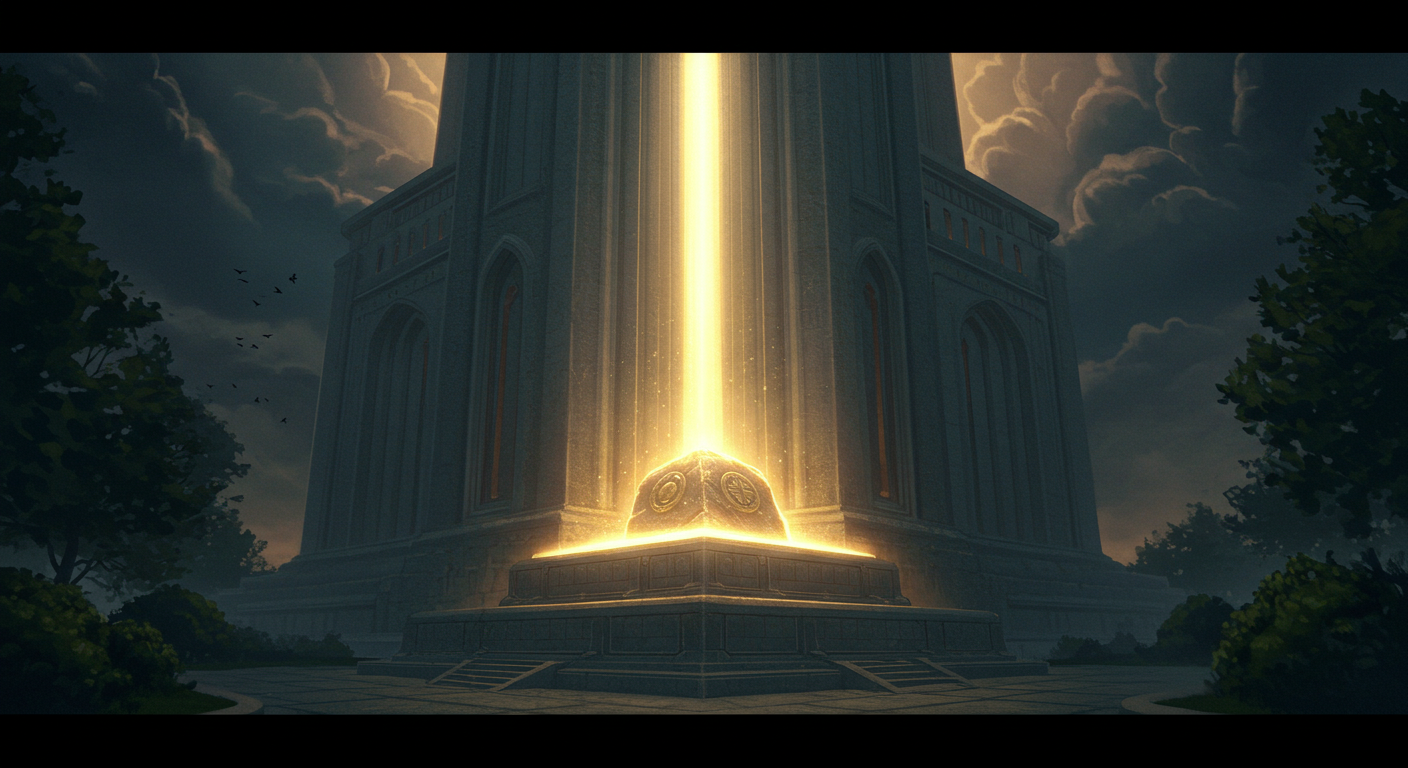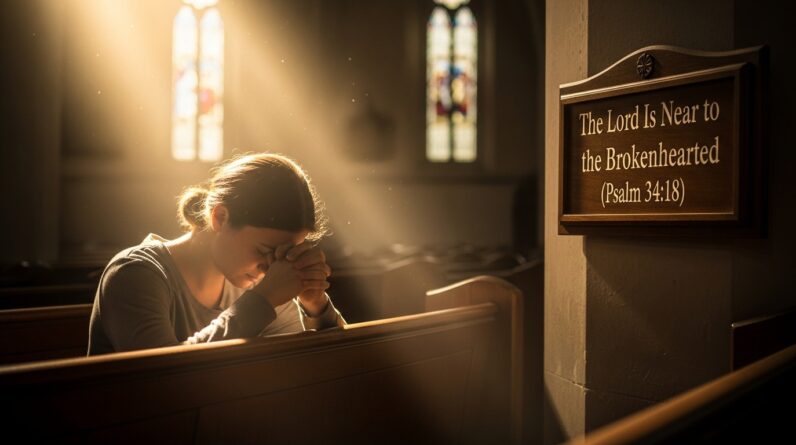The Stone The Builders Rejected (Psalm 118:22)
You may have heard the phrase “The Stone the Builders Rejected” many times—on banners, in sermons, in hymns. It’s a short phrase, but it carries the weight of centuries of Scripture and the hope of the Christian faith. The original verse, Psalm 118:22, proclaims a paradox: a stone rejected by the builders becomes the very cornerstone. Read it with me: Psalm 118:22. That verse, which you can trace back to Israel’s songs of deliverance, points beyond its immediate context to the life, death, and resurrection of Jesus Christ. In this article, you will explore how this prophetic saying was fulfilled in Christ, how it shapes the Church, and how it challenges your life today.
The historical setting of Psalm 118
When you read Psalm 118, you enter into a Thanksgiving hymn sung by God’s people after deliverance or victory. The psalmist celebrates God’s steadfast love and recounts how he was surrounded by trouble but rescued. Psalm 118:22 sits amid verses that praise God for turning mourning into dancing and shame into victory. The song’s immediate context is Israel’s deliverance, yet the imagery—of a stone rejected by builders—carries prophetic force. See the verse here: Psalm 118:22. You will notice how the psalm balances immediate historical gratitude with deep theological symbolism, which prepares the way for later New Testament writers to see Christ in this image.
Understanding the metaphor: stone, builders, and cornerstone
The image of a stone rejected by builders sounds simple, but it contains several layers. In ancient building practice, the cornerstone was the most important stone: it set the alignment, carried the weight, and ensured the stability of the entire structure. If the builders rejected a stone meant to be the cornerstone, they were rejecting the very foundation. Psalm 118:22’s metaphor is not merely about human oversight; it’s about a divine reversal—what men despise, God exalts. You can meditate on this when you read the verse: Psalm 118:22. This metaphor would later be applied by Jesus and the apostles to reveal God’s redemptive plan revealed in Christ.
The Stone the Builders Rejected in the teaching of Jesus
Jesus Himself referenced this verse as He confronted the religious leaders who opposed Him. In telling the parable of the wicked tenants, He quoted the psalm to make a startling claim: the rejected stone becomes the chief cornerstone. See how He does this in Matthew 21:42: Matthew 21:42. There’s a tenderness and a warning in Jesus’ voice here: tenderness for the truth He offers and warning for those who refuse it. When you read His words, you feel the tension between rejection and divine appointment—between human judgment and God’s eternal design.
The prophetic echo in the other Gospels
You won’t find this image only in Matthew. Mark and Luke also record Jesus applying the psalm to Himself, showing that this was no obscure interpretation but the heart of His claim. Read Mark’s account: Mark 12:10-11, and Luke’s record: Luke 20:17. In these passages, you see the leaders’ reaction—anger—because the truth of Jesus’ identity exposed their unbelief. You will notice that the authors deliberately connect Old Testament prophecy with Jesus’ present reality, instructing you to see the continuity of God’s plan.
The apostles declare Christ the rejected cornerstone
After the resurrection, the apostles plainly declared that Jesus is the fulfillment of Psalm 118:22. In Acts 4, Peter, filled with the Holy Spirit, proclaims Jesus as “the stone you builders rejected” and cites Scripture to show He is the foundation of salvation: Acts 4:11. You, as a reader, should hear the urgency in Peter’s declaration: the rejection of Christ by men does not thwart God’s purpose; it confirms His plan. The apostles’ use of the psalm is not merely rhetorical—it was conviction borne of experience with the resurrected Lord.
Paul and the prophetic fulfillment: stumbling stone and cornerstone
The apostle Paul also uses the image in his letters to make a theological point about God’s work among Jews and Gentiles. He describes Christ as a stumbling stone for some and a chosen cornerstone for others. Consider Romans 9:33: Romans 9:33. Paul’s purpose is pastoral and prophetic: he warns that rejection of Christ leads to stumbling, but faith receives Him as the foundation for righteousness. You will see in Paul’s letters a consistent pattern: the rejected stone becomes the center of God’s design, and human response determines blessing or judgment.
Peter’s pastoral teaching: living stones built into a spiritual house
Peter expands the metaphor and applies it to your life as a believer. He invites you to become living stones—built into a spiritual house—because Jesus is the cornerstone. Read his stirring words in 1 Peter 2:4-8: 1 Peter 2:4-8. Notice how personal he makes the application: you are called out of darkness into God’s marvelous light because you have come to the “living Stone.” The metaphor becomes intimate and practical: not only is Christ the foundation, but He forms a people who reflect His presence in the world.
The Church’s foundation: Ephesians on the household of God
Paul, writing to the church at Ephesus, describes the Church as being built on the foundation of the apostles and prophets, with Christ Jesus Himself as the cornerstone. Read this picture in Ephesians 2:19-22: Ephesians 2:19-22. This scripture will help you understand how “The Stone the Builders Rejected” is not just about Jesus’ identity but about the Church’s identity and mission. You, as part of the Church, are joined to this cornerstone, and your life is integrated into the spiritual structure God is building.
The theological significance: rejection, exaltation, and reversal
The theme of reversal runs through all Scripture—God lifts the lowly and humbles the proud. The image of a rejected stone becoming a cornerstone is a vivid example. You’ll see that rejection is not the final word with God. Consider how Psalm 118 continues, celebrating the stone that became the cornerstone and the Lord’s doing which brought it about: Psalm 118:23. Jesus’ life, death, and resurrection are the supreme example of this divine reversal. Where the world sees failure, God sees the setting of a foundation for redemption and new life.
The cost of being the Stone: suffering and exaltation
Jesus’ path to becoming the cornerstone included suffering, humiliation, and a shameful death. Yet God raised Him and highly exalted Him. This pattern of suffering followed by exaltation is central to understanding how God’s kingdom works. Reflect on Philippians 2:9-11, which proclaims the exaltation of Christ after His humility: Philippians 2:9-11. You will find hope here: your suffering is not meaningless when placed under the sovereignty of God. Christ’s path shows that God can use even rejection and death as the avenue for redemption.

Christ is the only foundation for spiritual life
Scripture insists that no other foundation can secure salvation and spiritual life. Paul writes unambiguously that no one can lay any foundation other than Jesus Christ. See his words in 1 Corinthians 3:11: 1 Corinthians 3:11. When you build your life on anything less than Christ—wealth, status, intellect—you risk collapse. The image of the rejected stone becoming the cornerstone is a summons to evaluate where you place your trust and what you allow to determine your identity.
Building your life on the Rock: practical spiritual application
Jesus used the language of rock and sand to teach about wise and foolish builders. He told you plainly: Build on the rock and your house will stand. Read this famous teaching in Matthew 7:24-27: Matthew 7:24-27. If you would make Christ your cornerstone, you will prioritize a relationship with Him through prayer, obedience to His Word, and involvement in the community He builds—the Church. Practical steps include regular reading of Scripture, worship, repentance, confession, and service to others. These practices allow you to discover Christ as your foundation.
The Stone the Builders Rejected and the nations
This image also has a missional dimension: the rejected stone becomes the hope of the nations. The inclusion of the Gentiles into God’s redemptive plan is woven into the New Testament’s use of this metaphor. Christ as the cornerstone brings diverse people together into a single spiritual structure. Reflect on how the Church is to be a foretaste of the reconciliation God intends—people of different backgrounds built on one foundation: Ephesians 2:20. You, then, are called to be part of a community that demonstrates the uniting power of Christ.
How this prophecy is a comfort in times of rejection
You will face rejection in life—by friends, family, colleagues, or society. When you do, remember that Christ Himself experienced the scorn of men and was rejected, yet became the cornerstone. That truth offers deep comfort. Read the poignant reminder in Hebrews 12:2 about Jesus, who endured the cross and is now exalted: Hebrews 12:2. Your pain is not overlooked by God. He joins Himself to you in suffering and promises resurrection and vindication in ways you might not yet see.
The scandal of the cross and the wisdom of God
To many, the message of the cross is foolishness; to you who believe, it is the power of God. Paul addresses this tension, showing that God often chooses what is weak or lowly to shame the wise. This is exactly what the image of the rejected stone conveys. Read 1 Corinthians 1:18-25 to see Paul’s explanation of the cross’s scandal: 1 Corinthians 1:18-25. If you want spiritual wisdom, you will find it not in the patterns of the world but in the crucified and risen Christ.
Objections and misunderstandings you may encounter
Some argue that the psalm refers only to some forgotten historical stone or to Israel alone. While the immediate context indeed celebrates Israel’s deliverance, the New Testament’s clear appropriation of the verse to Jesus settles the authoritative interpretation for Christian faith. When you encounter objections, respond with humility and the witness of Scripture. Paul addressed misunderstandings about Christ being a stumbling stone—some stumble because they seek righteousness by works, not by grace. Read Romans 9:33 again for clarity: Romans 9:33. Be patient, and remember that faith is often a journey, not a single instant.
You and the Stone: a personal invitation
At the heart of all this is a very personal call. The Stone rejected by the builders invites you to receive Him as your cornerstone. If you have not yet trusted Christ, know that the same stone rejected by the world is offered to you as a foundation for your life. The apostles and early Christians made this clear: belief in Jesus is not an abstract assent to historical facts but a personal trust that shapes daily living. Consider the invitation Jesus extends throughout the Gospels—come to Me, learn from Me, take up your cross and follow Me. If you are ready, receive this cornerstone by faith.
How to respond if you’re already a believer
If you are already a follower of Christ, the image of the rejected stone challenges you to deepen your devotion. It calls you to align your life with the Lord, who is the foundation of the Church. You are to live as a “living stone” (see 1 Peter 2:4-5)—holy, serving, and united with brothers and sisters. Ask God to search your heart, to remove anything that competes with Jesus for the place of honor in your life. Commit yourself anew to prayer, Scripture, and sacrificial service.
The Stone the Builders Rejected and the Mission of the Church
The Church exists to proclaim Christ—the cornerstone—to the world. You are part of that mission when you witness, serve, and live out the reality of the gospel. Paul’s exhortations to the Church remind you that the Church’s foundation is more than theology; it’s a living testimony to God’s saving work. See how Ephesians frames the Church as built on Christ: Ephesians 2:20. The rejected Stone becoming the cornerstone means your marginal or humble witness can be the very means God uses to change lives.
The hope of resurrection is anchored in the cornerstone
Central to the image is the victory of resurrection. The stone that was rejected did not remain under the rubble of history. Rather, Christ rose from the dead, vindicated by the Father, and became the foundation of a new creation. This is the hope you hold: that death does not have the last word. The apostles point to the resurrection as proof of Christ’s identity and authority. Reflect on how the resurrection transforms your fear into hope and your mourning into joy, a truth woven throughout the New Testament witness.
Living with confidence in the rejected-but-exalted Stone
Because Christ is the cornerstone, you can live with confidence even when the world rejects you. Your ultimate acceptance rests not in human approval but in God’s acceptance through Christ. The psalmist asks: “The Lord has done it this very day; let us rejoice.” See the joy of God’s vindication in Psalm 118:23. Let that joy shape your perspective. When you face criticism or ostracism for your faith, remember that Christ walked that road before you and now stands as your sure foundation.
The Stone the Builders Rejected as a model for humility
Christ’s path from rejection to exaltation also models humility for you. He did not come seeking the acclaim of the powerful; He came to serve and to give His life as a ransom. If you follow Him, you will be called to a life of humble service. Christians are not to seek prominence for its own sake but to reflect the self-giving love of the cornerstone. Let your spiritual life be marked not by a quest for recognition but by a desire to honor Christ and build others up.
Practical guidelines for building on the cornerstone
How do you practically build on Christ as your cornerstone? Here are a few ways you can grow in stability and grace:
- Make daily scripture reading and prayer your foundation.
- Participate faithfully in a local church where Christ’s presence is honored.
- Serve others in humility, reflecting the self-giving of Jesus.
- Confess and repent quickly when you fall, relying on Christ’s grace.
- Ground your decisions in Christian conviction rather than cultural approval.
Each of these practices helps you align your life with the cornerstone and ensures that you are not building on shifting sand. Remember Jesus’ instruction about wise builders: Matthew 7:24-27.
The lasting promise of the cornerstone for future hope
Finally, the image of the rejected stone turned cornerstone points you toward a future hope—the new heavens and new earth where Christ’s work is fully realized. The Church, built on this foundation, participates in God’s redemptive plan that culminates in eternity. As you live in the present, let your life be shaped by this future hope. The cornerstone is not only your present stability but the pledge of God’s ultimate victory and restoration.
Conclusion: an invitation and a challenge
You have read how “The Stone the Builders Rejected” moved from a psalm of Israel to the center of New Testament proclamation. You have seen Jesus named as that stone, rejected by men but raised by God to be the cornerstone of salvation, the foundation of the Church, and the hope of the nations. That truth invites you: will you accept Christ as your cornerstone? Will you allow your life to be built on Him? It also challenges you: Will you live in humble service, courageously witness, and join the Church in God’s mission?
If you are ready, come to Him—not as someone who must first make yourself worthy but as someone who needs grace. If you already belong to Him, take up your place as a living stone, building the spiritual house in which God dwells by His Spirit. The rejected stone became the cornerstone; by faith, you too can be part of that living structure.
Explore More
For further reading and encouragement, check out these posts:
👉 7 Bible Verses About Faith in Hard Times
👉 Job’s Faith: What We Can Learn From His Trials
👉 How To Trust God When Everything Falls Apart
👉 Why God Allows Suffering – A Biblical Perspective
👉 Faith Over Fear: How To Stand Strong In Uncertain Seasons
👉 How To Encourage Someone Struggling With Their Faith
👉 5 Prayers for Strength When You’re Feeling Weak

📘 Jesus and the Woman Caught in Adultery – Grace and Mercy Over Judgement
A powerful retelling of John 8:1-11. This book brings to life the depth of forgiveness, mercy, and God’s unwavering love.
👉 Check it now on Amazon
As a ClickBank & Amazon Affiliate, I earn from qualifying purchases.
Acknowledgment: All Bible verses referenced in this article were accessed via Bible Gateway (or Bible Hub).
“Want to explore more? Check out our latest post on Why Jesus? and discover the life-changing truth of the Gospel!”








